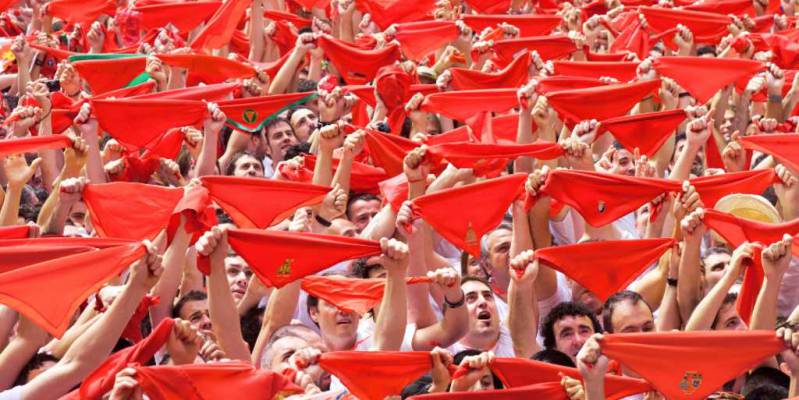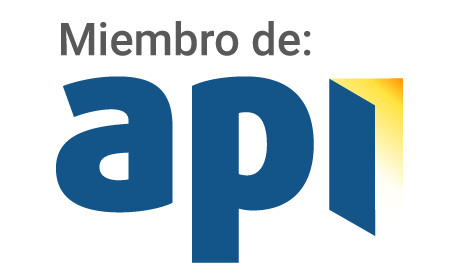News: The San Fermín festivals in Pamplona are much more than just bull races

Who has not heard of the bull run in Pamplona.
Everyone probably knows this spectacular part of the San Fermín festivities in Pamplona but the bull run or encierro in Spanish only takes a few minutes but is still so popular because it is spectacular to see. However, the San Fermín festivals are much more than just bullfighting and bullfighting.Every year between 6 and 14 July, the city of Pamplona in the state of Navarra celebrates, perhaps the most famous celebration in Spain. This traditional celebration owes its popularity to the spectacular running of bulls once written by writer Ernest Hemingway, after which the encierro became world famous. However, much more is celebrated in Pamplona during that festive week, which includes music, folkloric elements, fireworks and drinks and food.
Start and end
The party starts on July 6 at noon with the "chupinazo". This is being held at the Plaza Consistorial in front of the Pamplona town hall. El Txupinazo is nothing more than the opening of the festive week with the shooting of a rocket and the calling of the sentence: ¡Pamploneses, Iruñatarrok, Viva San Fermín, Gora San Fermin! keep air.
From that moment on, the party will start and this will only end on July 14 at midnight with the “pobre de mí" song where many tears can be seen in the square in front of the town hall of the city and shouted loudly: “pobre de mí , pobre de mi, que se han acabado las fiestas de San Fermín "and the fireworks erupt while the people present carry candles.
Inbetween
From 7 July, at eight o'clock in the morning for eight days from the Slope of San Domingo, six fighting bulls are hunted through the narrow streets of Pamplona. Thousands of daredevils, especially young men, want to prove their courage and speed by staying ahead of the bulls. The entire route, including the "Calle Estafeta" (the straight street of 250 meters in the center of the city), is protected by a wooden fence and is 848 meters long.
The runners are recognizable by their white clothing, red handkerchief (pañuela rojos) around the neck and red sash around their waist (faja). The entire spectacle often lasts no longer than three minutes. The narrow streets often lead to ugly falls of the bulls and the running people. Every year, dozens of people are injured during the run and every now and then a dead person.
Bull running is sometimes very boring to look at, especially if the bulls walk their route without taking any notice of the crowd. When the bulls have walked through the streets they end up in the arena, the plaza de toros of Pamplona.
Often the bulls run straight to the exit but will be seen again later that day in the arena when they will face the bullfighters or matadores and almost always have to die. That is also the least fun and most critical part of the San Fermín parties (just like many other local parties in Spain by the way).
In addition to the bull run and bullfighting, there is much more to do and see in Pamplona during the holidays. There are many food festivals, Basque folk dances, open air concerts, street theater, fireworks and the giant parade "Gigantes y cabezudos". People stand on the balconies during the celebrations to watch the bull run while eating and drinking at tables on the street.
History
Connoisseurs say that the feasts of Saint San Fermín are not based on anything. That is, before the 12th century no one had ever heard of the San Fermín saint but thanks to the discovery of a grave in the French Amiens where Fermín served as a bishop it was said that the saint would come from Pamplona in Spain. However, the Catholic Church places the holy day on September 25 and not on July 7.
According to critics, this date has been chosen to allow the summer festivities to take place when the weather is nice and can be combined with bullfighting that has been organized in Pamplona for centuries.
The history of bull running is also not entirely clear. It probably started when bullfighting became very popular and the only way to get the bulls from the stable to the arena was to let them run through the streets. At some point people decided to run with the bulls, that was illegal at the time.
This became more and more popular and grew into this tradition. The first bull run was held in 1899, but it became internationally popular after the first novel by Ernest Hemingway, called "The Sun Also Rises." He described it as the celebration of survival.
Protests
Protected against the running of bulls is a run of the nude, organized by the animal rights organization PETA, through the streets before the festivities. That organization calls the bull race an outright torture for the animals.
In 2008, it was decided to stop running naked because the media attention is increasing the number of tourists at the bull run itself, and to protest otherwise against the run, such as lying naked and full of blood on the square in front of the town hall.
The proponents, however, rely on the cultural aspect of running, about the same criterion that is used for bullfighting ... art, sport, tradition etc.
Culinary
In addition to the run, which is only a small but spectacular part, it is (like all Spanish parties) primarily a culinary feast. In the past, seafood and crawfish were mainly eaten in restaurants, nowadays it is mainly home-cooked. The meat of the fighting bulls is considered a delicacy, which is processed in a stew (estofado de carne de toro) or eaten as a cutlet (chuletas).
To meet the huge demand, bull meat from neighboring regions is often used. During the early lunch (almuerzo) after the run, a traditional specialty such as lamb's head with organ meat (cabeza y corada) is eaten. To get through the evening drinking, chistorra is eaten, a thin dried sausage, which is often made in Central Navarra.






